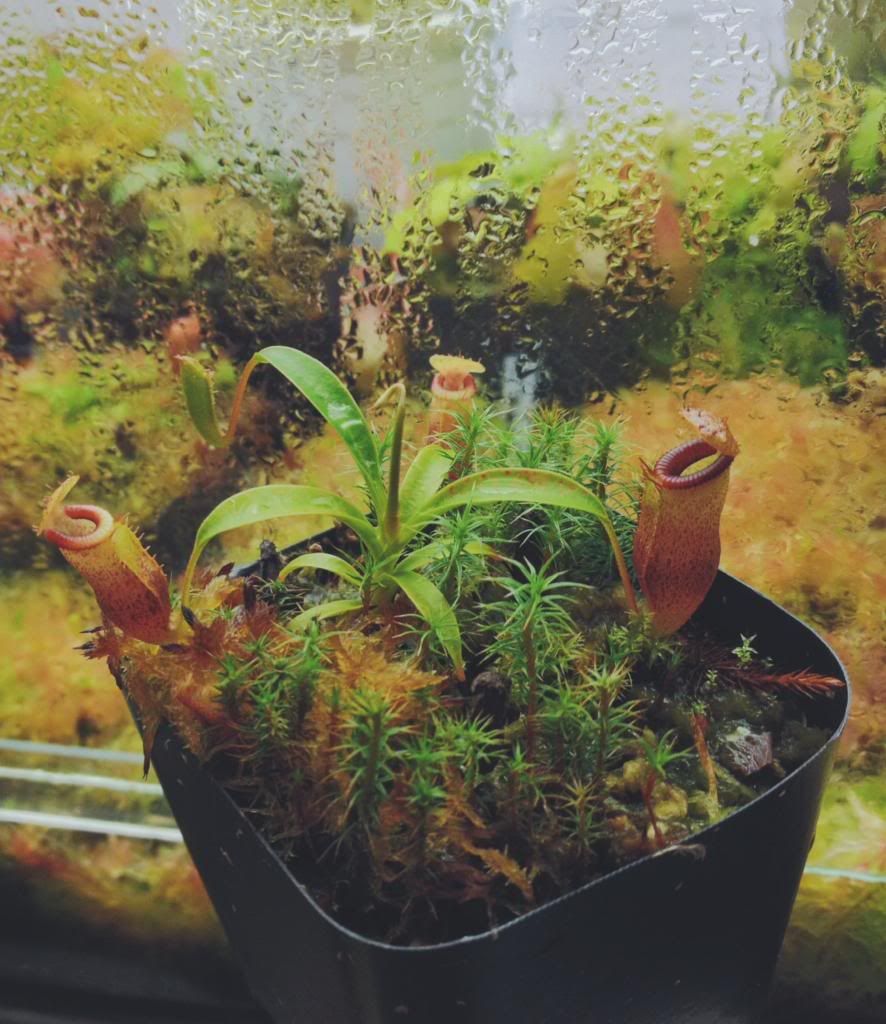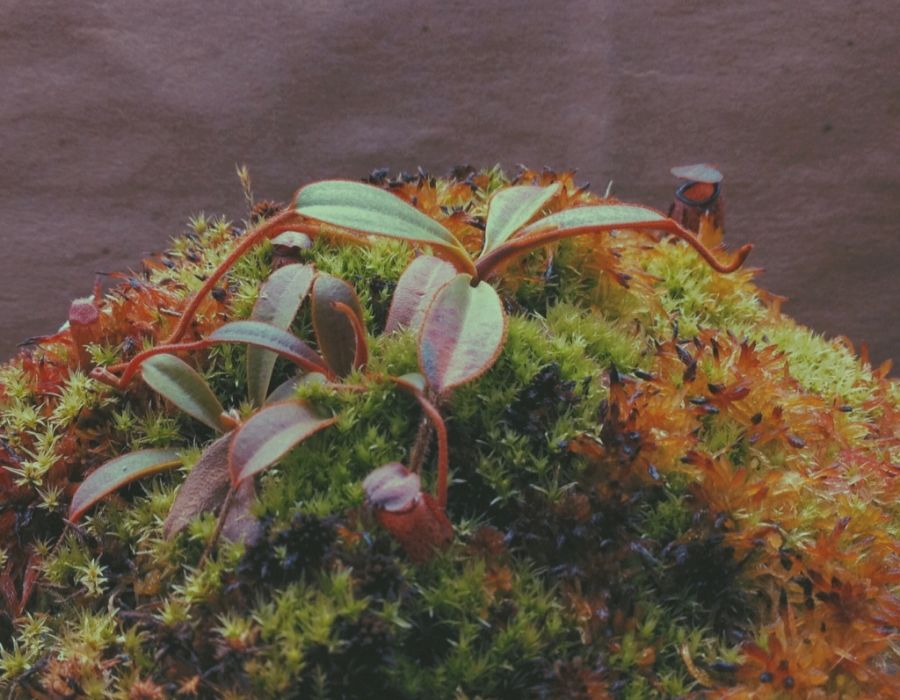|
|
Post by Avery on Feb 18, 2014 14:38:18 GMT -5
Beautiful setup Avery.  Thank you! Beautiful setup bro. Now i hate you. You and your awesome plants  Haha, thanks. I will have a bunch of plants for trade in the spring. Nothing too rare, but some nice specimens, and clusters of seedlings. |
|
|
|
Post by Devon on Feb 21, 2014 13:22:45 GMT -5
How did I miss this thread? Wonderful terrarium set-up and even more wonderful looking plants growing in it! Looking forward to seeing everything progress even more. Nice macros too. If the lens you're using happens to have an aperture ring, try setting it to a larger number and more of the picture should be in focus - although the blur looks cool if you're going for that effect. The plant you have labeled as D. oblanceolata looks like a form of D. aliciae or D. admirabilis, but an admirable one at that.  lol |
|
|
|
Post by canuk1w1 on Feb 21, 2014 13:51:27 GMT -5
... The plant you have labeled as D. oblanceolata looks like a form of D. aliciae or D. admirabilis, but an admirable one at that.  lol Pretty sure he has it labelled right - I have D. aliciae and its leaves are broader. I'll weigh in with more "authority" in a few months when my D. oblanceolata seedlings are larger and I can make a proper compare  . |
|
|
|
Post by Devon on Feb 21, 2014 14:17:54 GMT -5
... The plant you have labeled as D. oblanceolata looks like a form of D. aliciae or D. admirabilis, but an admirable one at that.  lol Pretty sure he has it labelled right - I have D. aliciae and its leaves are broader. I'll weigh in with more "authority" in a few months when my D. oblanceolata seedlings are larger and I can make a proper compare  . Yes, but there are many forms of D. aliciae and admirablis. Drosera oblanceolata usually grows almost flat at the base of the petiole and curves upwards from there. The plant Avery has does not do that, and has a different leaf shape and colour than D. oblanceolata. Here's a pic from growsundews.com of D. oblanceolata, a pic of D. admirablis I took from Google images, and some smaller D. aliciae for comparison. |
|
|
|
Post by canuk1w1 on Feb 21, 2014 17:18:16 GMT -5
After reviewing those pics, I'll vote for D. admirablis. The hairs on D. oblanceolata stop halfway down the leaf. D. aliciae's leaves tend to stay fatter towards the bottom.
But you're right, once we consider different forms and hybrids could be any of them. Sequence the DNA to get an authoritative answer ;-)
|
|
|
|
Post by H2O on Feb 21, 2014 23:41:55 GMT -5
I think Devon is right on this one, once it flowers it should be easy to tell.
As well DNA isn't the be all end all to an argument. DNA testing often proves nothing and more often then not just makes a gigantic mess of things. If anyone follows the current naming on all the Cattleya Alliance you'll know what I'm talking about. I feel people give DNA testing the bennefit of the doubt because it's "scientific" I feel they have a lot more work to do with plants compared to where we are at with humans and other animals.
|
|
|
|
Post by Apoplast on Feb 22, 2014 10:01:07 GMT -5
Hi Justin - Let's not dismiss DNA studies out of hand. We are just as far along with plants as with animals (humans included), just not all plants nor indeed all groups of organisms. What DNA studies are showing us is that the biological species concpet is inadequate to describe the relationships between groups of organisms that can exchange genetics more widely. Plants in general, and the Cattleya Alliance in articular, are really good and interbreeding. Orchids are a pain for these sorts of studies in that way, and once people get their hands on them in hybridize them - out of control. That short of genetic material swapping causes phylogenies to look more like networks than branching trees. It looks like this with some groups of microbes too. Though I haven't seen the latest Cattleya studies, I am guessing that's what is happening there too. It doesn't necessarily clear things up, but it's how it all works,
I hope I don't sound argumentative. I had a discussion about DNA phylogenies with someone in town who produced many gesneriad hybrids. He interpreted it as an argument, and I don't want to repeat that here. I guess having been in science for so long, what seems like discussion to me apparently is viewed as conflict to others. Anyhow, I just wanted to make my intent explicit.
|
|
|
|
Post by H2O on Feb 22, 2014 12:47:34 GMT -5
You don't sound argumentative at all! You put that very well, I think I might have swung a little far into the other side of the spectrum. I just dislike when people try to use DNA as a trump card in the argument (not that anyone here was doing that) we should try to take into account other factors like the ones you pointed out. If a group does interbreed easily shouldn't we try a more wholistic view of grouping plants together? Instead of just relying on the DNA studies.
I don't have a ton of experience in this field but it is something I would like to learn more about. There are a couple guys on the pitcherplant forums that have great discussions on DNA and Nepenthes, I'll try to dig up the thread.
|
|
|
|
Post by canuk1w1 on Feb 22, 2014 17:13:31 GMT -5
For comparison's sake, my D. aliciae: ![]()  ( click here if you cannot see the image) And my D. dielsiana:  ( click here if you cannot see the image) Whatever they are, I like them! I won't pretend to be any authority on taxonomy or Drosera either. At this stage, I find it incredibly interesting to observe the gross differences (and similarities) between species. I'll have to be very careful now I have D. spathulata and oblaceolata coming on line especially if they start hybridizing with each other - nobody will be able to trust any sundew I label  . |
|
|
|
Post by lloyd on Feb 22, 2014 19:34:53 GMT -5
DNA can certainly show relationships between plants. Where it exactly puts plants in a hierarchical order is probably a matter of some interpretation. This is especially true wherever plants are interbreeding frequently and in a complex fashion (which is exactly what people do with them).
|
|
|
|
Post by Devon on Feb 22, 2014 22:05:27 GMT -5
For comparison's sake, my D. aliciae: ![]()  ( click here if you cannot see the image) And my D. dielsiana:  ( click here if you cannot see the image) Whatever they are, I like them! I won't pretend to be any authority on taxonomy or Drosera either. At this stage, I find it incredibly interesting to observe the gross differences (and similarities) between species. I'll have to be very careful now I have D. spathulata and oblaceolata coming on line especially if they start hybridizing with each other - nobody will be able to trust any sundew I label  . Your D. aliciae does look quite different than Avery's Sundew. I see what you mean with the broad leaves. |
|
|
|
Post by Avery on Feb 22, 2014 22:47:03 GMT -5
Thanks for the insight everyone. I bought the seeds labelled as D. oblanceolata from Keehn's a couple of years ago. Not sure what to label them as now!
I will post a photo with a different perspective once I'm home from the trip I'm on.
|
|
|
|
Post by canuk1w1 on Feb 23, 2014 11:32:24 GMT -5
FWIW, I stumbled on an old thread while researching D. coccicaulis: ocps.proboards.com/post/20551/threadNot much has changed in 5 years  . Sequencing time! I need a volunteer to mouth pipette the P32, anyone? |
|
|
|
Post by Apoplast on Feb 28, 2014 20:09:26 GMT -5
Hi Justin - Glad I didn't sound like a pain. Sometimes I get excited and I am too forward. I maintain orchids are crazy! Actually, the breeding system in Orchidaceae is really interesting. I've heard people argue that it's one of the reasons the lineage is so rich in species. It's doubly cool because Asteraceae, which is also mightily diverse, has a breeding system that is in many ways at the opposite end of the spectrum as orchids. Both have lead to great success...
Okay, I just realized I have deviated far off topic. Sorry Avery. Your set up is cool, and I look forward to more updated in the future.
|
|
|
|
Post by Avery on Mar 24, 2014 15:22:29 GMT -5
No idea what this seedling is. Any ideas?  Nepenthes argentii Nepenthes argentii making some progress.  |
|